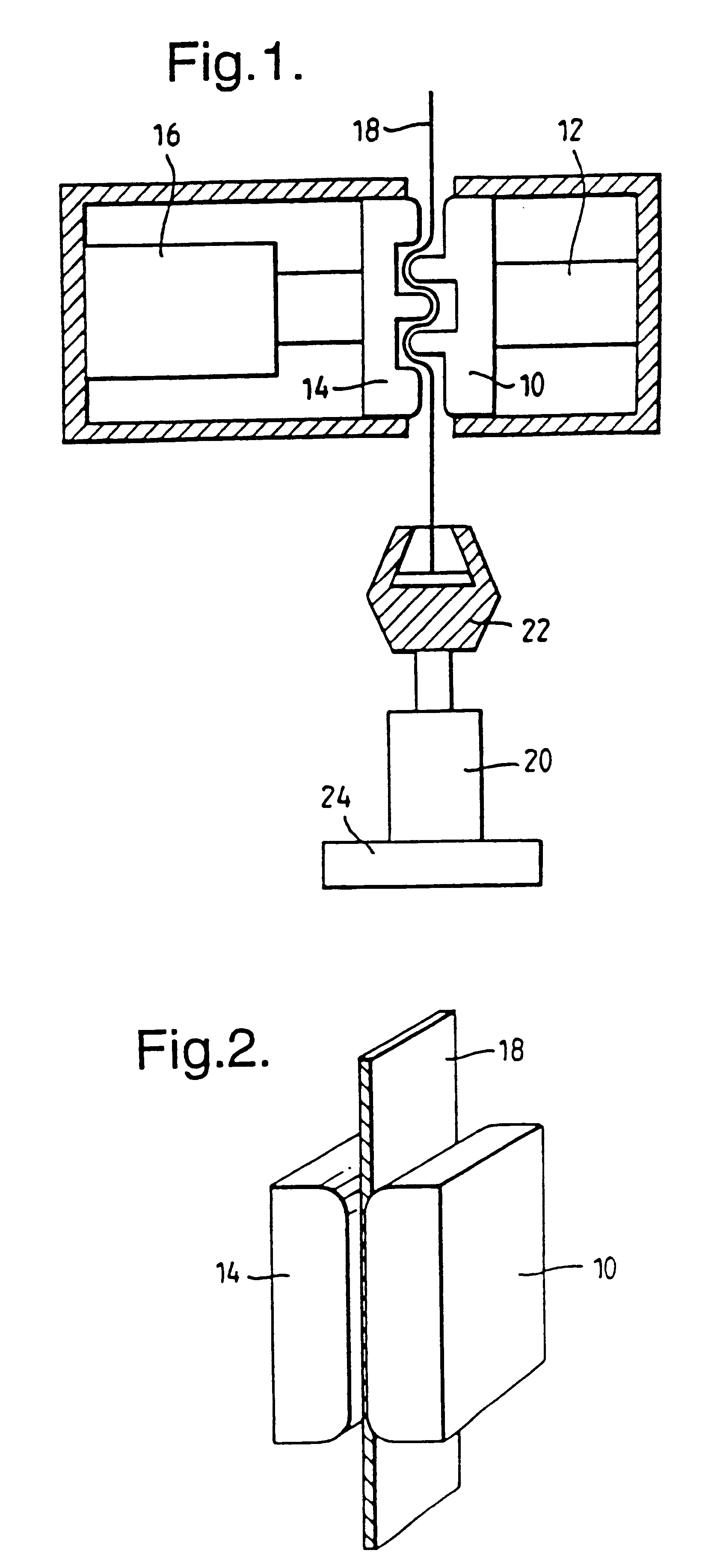Lubricated metal workpiece and method
a technology of lubricating metal workpieces and workpieces, applied in the field of lubricating metal, can solve the problems of ineffective lubricants, high melting esters, and liquid or sticky lubricant film prone to smear and pick up dust and dirt, and achieves good adhesion of uniform film, good adhesion of lubricant film, and good spraying
- Summary
- Abstract
- Description
- Claims
- Application Information
AI Technical Summary
Benefits of technology
Problems solved by technology
Method used
Image
Examples
example 2
Lubricants 1 and 3 from Example 1 were evaluated. Lubricant 2 from Example 1 was used for comparative purposes.
Experimental Procedure
The experimental work described below was carried out on 1.6 mm gauge 5754 material.
2.1 Application of Lubricant to Aluminium Sheets
The procedure for lubricant application consisted of pre-heating a reservoir of the new lubricant to 70.degree. C., and applying this onto sheets using air-assisted airless spray nozzles. Lubricant was applied to sheets which were held at both room temperature (20.degree. C.), and preheated to 60.degree. C. These sheets were then placed in stacks. In the case of the pre-heated material, the sheets were placed in a stack when the lubricant had solidified.
2.2 Adhesive Compatibility
The standard test method for adhesive compatibility is to assemble standard lap shear joints with a 10 mm overlap, using lubricated 1.6 mm pre-treated coupons and a standard adhesive A string of six such joints are then exposed to combined stress / h...
PUM
| Property | Measurement | Unit |
|---|---|---|
| Temperature | aaaaa | aaaaa |
| Fraction | aaaaa | aaaaa |
| Linear density | aaaaa | aaaaa |
Abstract
Description
Claims
Application Information
 Login to View More
Login to View More - R&D
- Intellectual Property
- Life Sciences
- Materials
- Tech Scout
- Unparalleled Data Quality
- Higher Quality Content
- 60% Fewer Hallucinations
Browse by: Latest US Patents, China's latest patents, Technical Efficacy Thesaurus, Application Domain, Technology Topic, Popular Technical Reports.
© 2025 PatSnap. All rights reserved.Legal|Privacy policy|Modern Slavery Act Transparency Statement|Sitemap|About US| Contact US: help@patsnap.com



